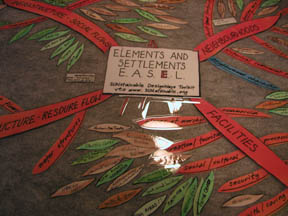
DesignWays
DesignWays is a toolkit for enabling community and stakeholder participation in ecological planning. DesignWays harnesses people's energy and ideas to bring about a better future. The process brings community members and appropriate stakeholders together to realise their untapped potential, and improve the places that are important to them. DesignWays enables people to translate sustainability principles into real and long lasting change.
Download a leaflet (700 KB). A draft delivery strategy can be found here.
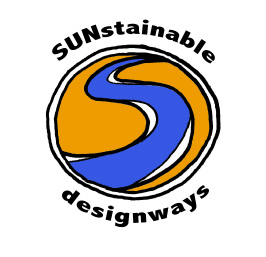
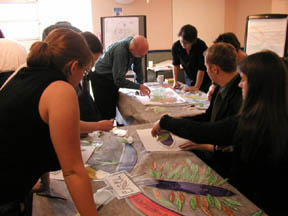
It is widely agreed
that sustainability is relatively easy to understand in principle, but
implementation is difficult to achieve in practice. There are increased
calls for a broader base of community and stakeholder participation in
planning, but there is debate about the best way to mobilise and utilise
such participation. The SUNstainable DesignWays™ process was developed
in response to the need to animate the process of planning for sustainability,
and to maximise the value of participation in planning.
DesignWays is a toolkit for enabling community and stakeholder participation
in ecological planning. It harnesses people's energy and ideas to bring
about a better future. The process brings community members and appropriate
stakeholders together to realise their untapped potential, and improve
the places that are important to them. DesignWays enables people to translate
sustainability principles into real and long lasting change. Participants
learn to think creatively, and look for areas of common interest instead
of conflict. Unlike many participatory methods, sustainability is not
a 'bolt-on' at the end of the process. Nature is seen as an integral part
of the fabric of human settlements. Waste is designed out of the system.
What makes DesignWays unique is the use of systems thinking to bring together
these elements into a coherent whole.
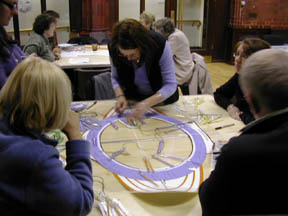
DesignWays provides a bridge for productive dialogue between local and professional participants. This helps to integrate bottom-up and strategic planning. DesignWays, with its transferable tools, has been successfully applied linking site and river catchment levels of scale. One participant summed up the DesignWays process this way:
"I like the idea of 'putting the pens in the hands of the residents' because normally the way that we work is, the landscape architects make the plan and we take it back to the residents. With DesignWays the residents sat around the table with the 'leaves' [colour-coded note-sheets used to record ideas] and the map, actually discussing where they think things should be placed. I think it made a big difference in the final plan as well. I could see people looking at [the final plan] and saying "Oh, that is what I suggested and I thought that should go there". I thought that was really, really exciting".

Following successful piloting in rural regeneration in Southern Africa, DesignWays has been used in project planning in both academic and practitioner contexts, e.g. for teaching environmental science at Dominican University in California and in workshops with companies such as Hewlett Packard and Mondavi Vineyards. The preface to Joanne's PhD describes its early development
A recent application of DesignWays has been to develop a strategic framework for regeneration in the heavily urbanised Irk River Valley in North Manchester, UK with a broad range of stakeholders. One of the outcomes was a landscape plan developed with local residents for Moston Vale. This has become the starting point for the Newlands project of the Forestry Commission for regenerating this ex-landfill site.
The toolkit has been used for applications other than participatory, ecological design. Examples include: stakeholder workshops (e.g. for the Manchester Biodiversity Strategy) and in encouraging feedback at conferences (e.g. at the UK Systems Society 2004 annual conference). See this page for outcomes from workshops faciliated with DesignWays.
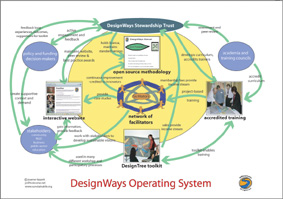
Joanne Tippett has been developing the DesignWays process since 1993. It was tested in her Phd research at the University of Manchester. Joanne is currently undertaking post-doctoral research at the University of Manchester. This includes looking at the potential of different mechanisms for rolling out the DesignWays process on a larger scale and developing training programmes. Click here to see a draft delivery strategy.
Holocene Design is hosting the sunstaianble.org website until a separate institution is developed for delivering this training.